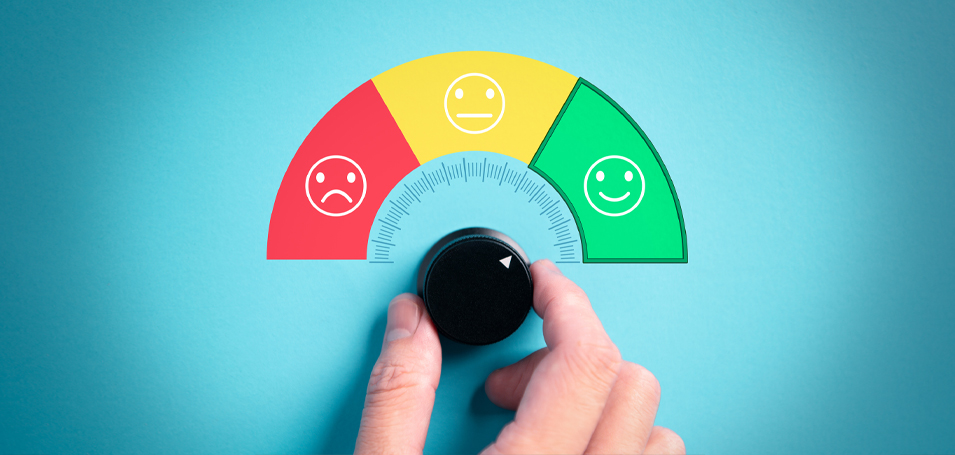Just like baking, the right mix of ingredients, in the correct ratios, are critical to a great customer onboarding outcome. And as with baking, once you establish your baseline approach, you’ll be looking for optimizations along the way to get better time-to-value and customer success. Finding the right combination of hands-on and self-paced training can give your customers the best chance of success while managing critical internal resources.
Dialing in the right mix
At Thought Industries our mantra for learning product creation is, “Experiences and Outcomes”. Our focus is on creating the best possible experience for a learner to attain a clearly defined outcome or behavior change. And this training matters. According to the recent TSIA “State of Customer Success” report, 68% of trained customers use the product more and trained customers renew at 12% higher rate more than untrained customers.
It’s important to make sure you’re using all of the learning delivery options at your disposal (self-paced, virtual training, in-person training etc.) and that you’re leveraging the correct delivery option to get the best results. Most organizations have existing training and onboarding processes in place, and are looking for optimizations. These optimizations normally come in two forms:
- Better training outcomes: More knowledgeable customers
- Onboarding scale: Deliver more training to more customers
In order to improve your training outcomes, you must first have effective benchmark data points. To keep it simple let’s take look at a couple: Learning engagement and product proficiency.
Learning Engagement
For learning engagement, you need to be able to quantify how often someone is engaging in training, for how long, and where they are in the continuum of that learning pathway — 10%, 50% or 80% complete for example.
Product Proficiency
When you add product proficiency to the Learning Engagement metric you have a very powerful indicator of success. Product proficiency is different for every business, but measurements like completion milestones or specific events being fired (e.g. first email campaign, page built etc.) in your technology are clear indicators of knowledge and understanding.
From Data to Scale
One simple exercise to help you get started is to outline all training topics your new customers need to cover during onboarding. With this list break it down into training topics and outcomes that require consultation and feedback and training that could be delivered in a self-paced format. This very simple task will help immediately in managing and planning for delivery of onboarding training at scale.
Define Personas
Once you have defined your content list, start to break it into target personas. Not everyone on your customer team will need to engage in all the training, so segment your content and build training programs designed for each one. The first persona you will most likely want to target out of the gate is the admin or super-user. This is the person that has ownership of your technology and is on the hook to tactically execute. They are going to need to be the technology subject matter experts on the customer side, and in this role should know as much as they can about not only to use the software but how to use it meet their goals and definition of success. There will most likely be other personas in the group, most notably the business owner, who is the sponsor and most critical to future renewal and also looking for value quickly. They will be looking for best practices and understanding how other customers are leveraging the technology for business success.
Find Your ‘Self-Serve’ Content
Once the personas are set out you will want to map the training delivery definitions, i.e. what method you will use to deliver the training. This is pretty straight forward – all content that can be delivered without the need for immediate consultation will be good candidates for self-paced online learning delivery. If it’s short format content, you can start with a video or a recorded training. You can also schedule weekly virtual trainings that onboarding clients can join to get up to speed with standard information. This way you create room for your CSM team to focus their consulting hours on helping answer questions and provide feedback on best practices.
Continue to Iterate
Once you deliver the trainings you will soon get feedback on what works in what formats. You can also layer in new trainings, loop in subject matter experts and expand the scope as you measure the onboarding KPIs.
Offer Certifications
One powerful way to close the loop and ensure that your customers engage fully in the training is to add a certification at the end of the onboarding pathway. This is a great way to truly monitor the folks that are knowledgeable with your technology. You can offer perks to this group, perhaps giving them first access to new features or discounts on user conferences so that certifications can offer real value for both parties. In the end, measuring the engagement with your self-serve content will help you continue to scale your onboarding efforts. It will also help your customer onboarding team get the most out of their in-person customer interactions.




